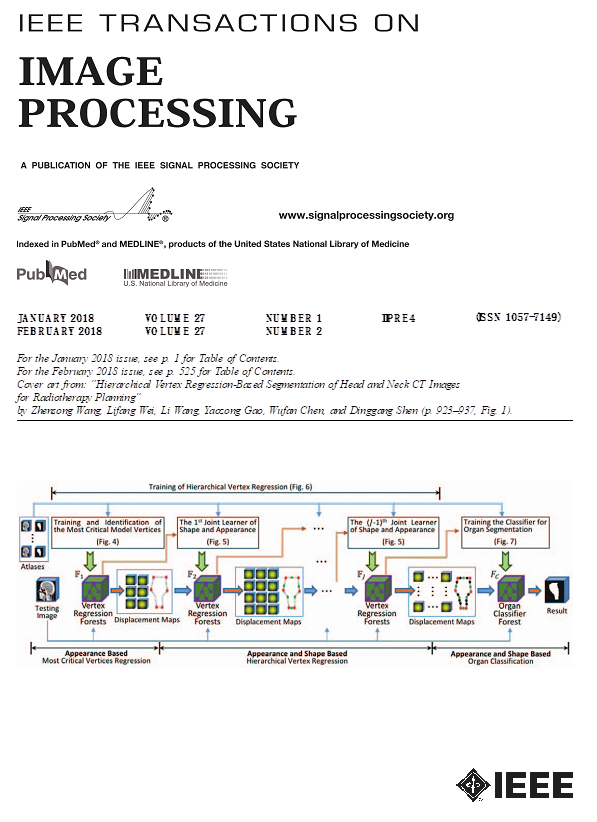高光谱图像异常检测中的多尺度自编码器抑制策略。
IF 13.7
1区 计算机科学
Q1 COMPUTER SCIENCE, ARTIFICIAL INTELLIGENCE
引用次数: 0
摘要
自编码器(ae)由于能够根据重建误差将背景与异常分离,在高光谱异常检测(HAD)中受到了广泛关注。然而,现有的声发射方法通常不能充分利用空间信息,可能会精确地重建异常,从而影响检测精度。为了解决这些问题,本研究提出一种新的多尺度自编码器抑制策略(MASS)。MASS的基本原理是优先重建背景信息而不是异常。在编码阶段,将卷积与全维动态卷积(ODConv)相结合的局部特征提取器与基于Transformer的全局特征提取器相结合,有效地提取了多尺度特征。此外,设计了自注意抑制模块(SAS)来减少异常像素的影响,使网络能够更专注于精确重建背景。在网络学习过程中,由每次迭代的测试结果得出的掩码被集成到损失函数计算中,只包含前一轮检测中异常分数较低的位置。在8个数据集上的实验表明,该方法在性能上明显优于几种传统方法和深度学习方法。本文章由计算机程序翻译,如有差异,请以英文原文为准。
Multi-scale Autoencoder Suppression Strategy for Hyperspectral Image Anomaly Detection.
Autoencoders (AEs) have received extensive attention in hyperspectral anomaly detection (HAD) due to their capability to separate the background from the anomaly based on the reconstruction error. However, the existing AE methods routinely fail to adequately exploit spatial information and may precisely reconstruct anomalies, thereby affecting the detection accuracy. To address these issues, this study proposes a novel Multi-scale Autoencoder Suppression Strategy (MASS). The underlying principle of MASS is to prioritize the reconstruction of background information over anomalies. In the encoding stage, the Local Feature Extractor, which integrates Convolution and Omni-Dimensional Dynamic Convolution (ODConv), is combined with the Global Feature Extractor based on Transformer to effectively extract multi-scale features. Furthermore, a Self-Attention Suppression module (SAS) is devised to diminish the influence of anomalous pixels, enabling the network to focus more intently on the precise reconstruction of the background. During the process of network learning, a mask derived from the test outcomes of each iteration is integrated into the loss function computation, encompassing only the positions with low anomaly scores from the preceding detection round. Experiments on eight datasets demonstrate that the proposed method is significantly superior to several traditional methods and deep learning methods in terms of performance.
求助全文
通过发布文献求助,成功后即可免费获取论文全文。
去求助
来源期刊

IEEE Transactions on Image Processing
工程技术-工程:电子与电气
CiteScore
20.90
自引率
6.60%
发文量
774
审稿时长
7.6 months
期刊介绍:
The IEEE Transactions on Image Processing delves into groundbreaking theories, algorithms, and structures concerning the generation, acquisition, manipulation, transmission, scrutiny, and presentation of images, video, and multidimensional signals across diverse applications. Topics span mathematical, statistical, and perceptual aspects, encompassing modeling, representation, formation, coding, filtering, enhancement, restoration, rendering, halftoning, search, and analysis of images, video, and multidimensional signals. Pertinent applications range from image and video communications to electronic imaging, biomedical imaging, image and video systems, and remote sensing.
 求助内容:
求助内容: 应助结果提醒方式:
应助结果提醒方式:


